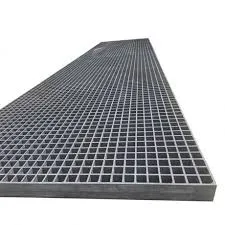
-
 Afrikaans
Afrikaans -
 Albanian
Albanian -
 Amharic
Amharic -
 Arabic
Arabic -
 Armenian
Armenian -
 Azerbaijani
Azerbaijani -
 Basque
Basque -
 Belarusian
Belarusian -
 Bengali
Bengali -
 Bosnian
Bosnian -
 Bulgarian
Bulgarian -
 Catalan
Catalan -
 Cebuano
Cebuano -
 China
China -
 China (Taiwan)
China (Taiwan) -
 Corsican
Corsican -
 Croatian
Croatian -
 Czech
Czech -
 Danish
Danish -
 Dutch
Dutch -
 English
English -
 Esperanto
Esperanto -
 Estonian
Estonian -
 Finnish
Finnish -
 French
French -
 Frisian
Frisian -
 Galician
Galician -
 Georgian
Georgian -
 German
German -
 Greek
Greek -
 Gujarati
Gujarati -
 Haitian Creole
Haitian Creole -
 hausa
hausa -
 hawaiian
hawaiian -
 Hebrew
Hebrew -
 Hindi
Hindi -
 Miao
Miao -
 Hungarian
Hungarian -
 Icelandic
Icelandic -
 igbo
igbo -
 Indonesian
Indonesian -
 irish
irish -
 Italian
Italian -
 Japanese
Japanese -
 Javanese
Javanese -
 Kannada
Kannada -
 kazakh
kazakh -
 Khmer
Khmer -
 Rwandese
Rwandese -
 Korean
Korean -
 Kurdish
Kurdish -
 Kyrgyz
Kyrgyz -
 Lao
Lao -
 Latin
Latin -
 Latvian
Latvian -
 Lithuanian
Lithuanian -
 Luxembourgish
Luxembourgish -
 Macedonian
Macedonian -
 Malgashi
Malgashi -
 Malay
Malay -
 Malayalam
Malayalam -
 Maltese
Maltese -
 Maori
Maori -
 Marathi
Marathi -
 Mongolian
Mongolian -
 Myanmar
Myanmar -
 Nepali
Nepali -
 Norwegian
Norwegian -
 Norwegian
Norwegian -
 Occitan
Occitan -
 Pashto
Pashto -
 Persian
Persian -
 Polish
Polish -
 Portuguese
Portuguese -
 Punjabi
Punjabi -
 Romanian
Romanian -
 Russian
Russian -
 Samoan
Samoan -
 Scottish Gaelic
Scottish Gaelic -
 Serbian
Serbian -
 Sesotho
Sesotho -
 Shona
Shona -
 Sindhi
Sindhi -
 Sinhala
Sinhala -
 Slovak
Slovak -
 Slovenian
Slovenian -
 Somali
Somali -
 Spanish
Spanish -
 Sundanese
Sundanese -
 Swahili
Swahili -
 Swedish
Swedish -
 Tagalog
Tagalog -
 Tajik
Tajik -
 Tamil
Tamil -
 Tatar
Tatar -
 Telugu
Telugu -
 Thai
Thai -
 Turkish
Turkish -
 Turkmen
Turkmen -
 Ukrainian
Ukrainian -
 Urdu
Urdu -
 Uighur
Uighur -
 Uzbek
Uzbek -
 Vietnamese
Vietnamese -
 Welsh
Welsh -
 Bantu
Bantu -
 Yiddish
Yiddish -
 Yoruba
Yoruba -
 Zulu
Zulu
grp duct
Understanding GRP Duct Enhancements in Ventilation Systems
In the realm of modern construction and HVAC (Heating, Ventilation, and Air Conditioning) systems, the materials used in ductwork play a crucial role in ensuring efficiency, durability, and performance. Glass Reinforced Plastic (GRP) duct is an advanced solution that has gained significant traction in the industry due to its myriad benefits over traditional materials. This article aims to explore the properties, advantages, and applications of GRP duct in contemporary ventilation systems.
What is GRP Duct?
Glass Reinforced Plastic, commonly known as fiberglass, is a composite material made of a polymer matrix reinforced with glass fibers. GRP ductwork is designed to transport air and other gases in HVAC systems, offering a lighter, corrosion-resistant, and insulated alternative to conventional metal ducts. The manufacturing process involves molding the glass fibers and resin into various shapes, allowing for versatile design and integration into different environments.
Key Advantages of GRP Duct
1. Corrosion Resistance One of the standout features of GRP ducting is its resistance to corrosion. In environments where moisture, chemicals, and aggressive elements are prevalent, steel or metal ducts can suffer from rust and degradation. GRP, on the other hand, remains impervious to these factors, ensuring longevity and reliability.
2. Lightweight GRP duct systems are significantly lighter than traditional metal ducts. This characteristic reduces the infrastructure load and makes transportation and installation much easier, enhancing overall project efficiency. This lightweight nature also minimizes the required structural support, leading to potential cost savings in construction.
3. Thermal Insulation With excellent insulating properties, GRP ducts effectively maintain temperature control within the system. This thermal efficiency decreases energy consumption, as less energy is required to heat or cool the air that passes through the ductwork. Proper insulation also minimizes condensation, reducing the risk of mold and mildew growth.
4. Flexibility in Design GRP ducting can be manufactured in a variety of shapes and sizes, allowing for greater flexibility in design compared to rigid metal ducts. This adaptability facilitates installation in tight or complex spaces, making it an ideal choice for modern building designs that often incorporate unique architectural features.
grp duct

5. Reduced Noise Levels The construction of GRP ductwork helps to dampen sound transmission. Unlike metal ducts, which can amplify noise from airflow, GRP ducts are quieter, leading to a more comfortable indoor environment. This is especially beneficial in settings such as offices, schools, and hospitals where noise levels can significantly impact productivity and well-being.
Applications of GRP Duct
Due to its numerous advantages, GRP duct is increasingly being utilized in various applications
- Commercial Buildings In offices, retail spaces, or large commercial complexes, GRP duct systems are used for efficient air handling, providing a consistent and comfortable environment while reducing energy costs.
- Industrial Usage Factories and manufacturing plants often expose duct systems to harsh chemicals and conditions. GRP's resistance to corrosion makes it a suitable choice for these environments.
- Marine & Offshore The marine industry has widely adopted GRP ducts due to their lightweight property and resistance to saltwater corrosion, making them an ideal choice for ships and offshore platforms.
- Cleanrooms & Hospitals In environments that require stringent hygiene standards, such as hospitals or pharmaceutical laboratories, GRP ducts help maintain clean air quality, are easy to clean, and reduce contamination risks.
Conclusion
As the construction and HVAC industries continue to evolve, the demand for materials that offer efficiency, durability, and environmental resistance remains paramount. GRP ducting not only meets these demands but also provides innovative solutions that enhance the performance and reliability of ventilation systems. With its growing applications across various sectors, it is clear that GRP duct is more than just a passing trend; it represents the future of modern ventilation solutions. By embracing such technologies, builders and engineers can contribute to creating healthier, more efficient living and working environments. With ongoing advancements in material science, we can expect to find even more benefits and applications for GRP duct in the years to come.









